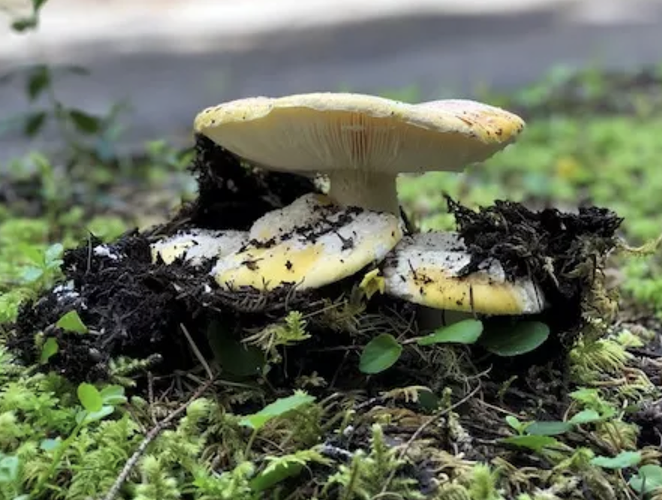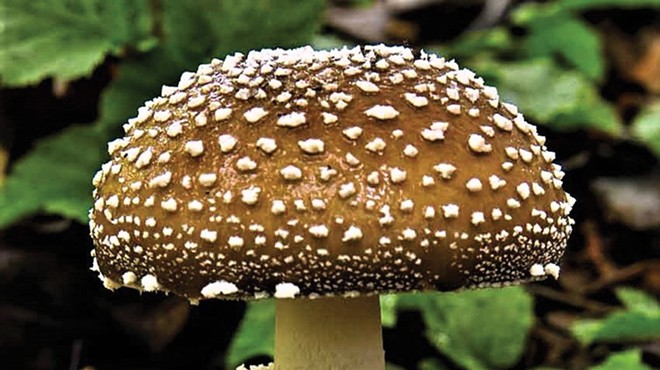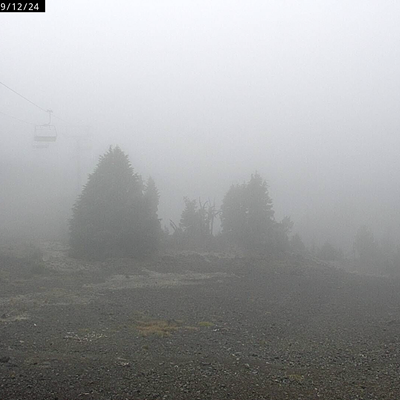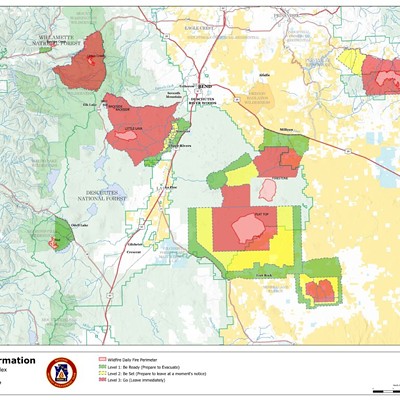Recently, some of these toxic mushrooms have started to grow, causing pet owners and veterinarians to warn people about the harmful outcomes of ingesting them.
Last week, Jen Jones took her Husky mix, Maya, to a friend’s house in Sunriver. After about an hour of letting Maya run around in the backyard, Jones took her pup back to their home in Bend. That’s when Jones noticed something was off.
First, Jones said, Maya was acting lethargic. She started drooling and the symptoms progressed rapidly from there. “Then she just couldn’t walk,” said Jones. “Her paws were folding under her and she just started seizing and convulsing.” Jones and her husband, JJ, immediately took Maya to the emergency veterinarian.
After speaking with the doctor, and their friend who checked her backyard, they realized Maya had ingested a type of toxic mushroom, Amanita pantherina mushrooms.
Central Oregon has two common poisonous mushrooms, including the Amanita pantherina and Amanita aprica mushrooms. In general, the pantherina mushrooms, like the one Maya ate, are more likely to show up in the middle or end of summer. Aprica mushrooms are usually seen in the spring or early summer.
Some amanita mushrooms, like Amanita Muscarias, are also known to cause mind-altering effects. A chemical found in a certain type of Amanita mushroom, muscimol, was recently found in microdosing products that have been causing illnesses across the United States.
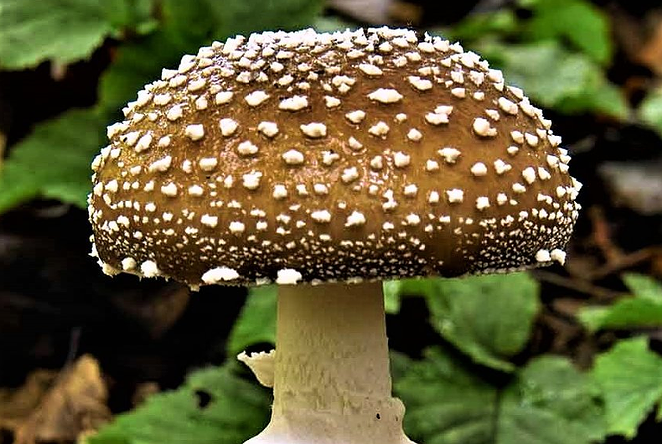
According to Taylor Stockdale, chief of the emergency department at the Veterinary Referral Center of Central Oregon, danger among poisonous mushrooms can vary. Some of them are totally fine, while others are incredible lethal and fast-acting. “There’s not an antidote for some of them, so that can be the really hard part,” she said.
Symptoms include nausea, drooling, lip licking, seizures and tremors and sometimes gastrointestinal symptoms. Veterinarians generally have pretty good luck in treating them, said Stockdale, as long as they can get their tremors under control.
In these cases, an animal hospital will usually keep the dog for 24 hours. They typically give them medications to slow or stop the tremors and can administer other medications to try and soak up the residual toxins in their body.
“It’s kind of variable on how well those work, depending on the type of mushroom,” Stockdale said.
After the vet treated Maya, Jones’s dog, she was feeling better. On July 24, Jones was able to take Maya home. She decided to make a post in a local Facebook group to warn people about these mushrooms.
According to local mushroom expert Julie Hamilton with the Central Oregon Mushroom Club, it’s difficult to know exactly when and where these mushrooms will pop up. She advises people to look out for these mushrooms in yards, at dog parks and out on local hiking trails.
“It’s hard to make any hard and fast rules about mushrooms, they’re sneaky buggers,” said Hamilton.
The two mushrooms that cause the most problems, she noted, have a compound in them that’s scent attracts dogs, and especially puppies. While some mushrooms can be hard to identify, the ones that are problematic are usually easily identifiable, if people know what to look for.
Toxic mushrooms often have a white material on top, that often looks like white speckles. Hamilton advises people to always be on the lookout, or to email the Central Oregon Mushroom Club if they need help identifying a potentially poisonous mushroom.
“Just check your yard. A lot of times, as we start getting thunderstorms and more rain in the fall, things are going to pop up in people’s yard,” she said. “It’s really important to just kind of be on the lookout where your dog hangs out.”
Stockdale mentioned that cases of mushroom poisoning in dogs typically come in waves. “We tend to see them come in bundles,” said Stockdale. “There’s like a week where we’ll see maybe five to 10 different mushroom toxicities in dogs.”
If someone is worried that their pet may have gotten into a toxic mushroom, they should bring their animal and a sample of the mushroom, to the veterinary hospital.
“If families are starting to see mushrooms pop up on their walks or in their yard, I would just be super vigilant with their dog for the next couple of weeks, because eventually here, it gets dry enough that they’ll disappear,” said Stockdale.


